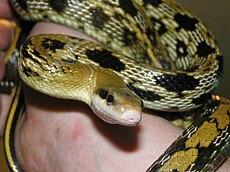
Dozens of abandoned and stray snakes are seeking new homes in Aberdeenshire.
The Scottish SPCA’s Drumoak centre has looked after 80 snakes this year so far, compared to just 14 in 2013 and 13 in 2012.
It is understood the increase is down to the Drumoak centre taking in snakes from the charity's Glasgow re-homing centre.
The charity has been left with 34 snakes needing new homes including a boa constrictor, pythons, corn snakes and a Taiwanese beauty rat snake.
Jacki Bell, senior animal care assistant, said: “We have a large variety of snakes, from tiny baby corn snakes to a Taiwanese beauty rat snake, boas and pythons.
"The majority are corn snakes which were found as strays and never reclaimed. Others were sadly abandoned and some arrived after their owners could no longer offer them the care they needed.
"Unfortunately we seem to struggle to rehome exotics animals in this area, especially corn snakes. This is a real shame as corn snakes are generally quite docile and easy to handle.
"They may be a good option for someone interested in exotics who hasn't owned a snake before. That said, we would certainly urge anyone thinking of taking on a snake to do their research before committing to one.
"While snakes aren't everyone's cup of tea, they can make excellent pets for owners who will appreciate them and meet all their needs.
"Anyone who wishes to meet our snakes are very welcome to come along or call us for further information on 03000 999 999."









.jpg)